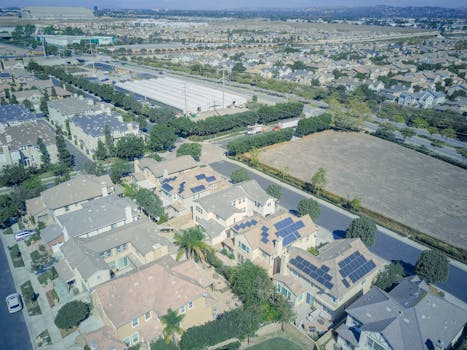Off-Grid Living: From Yurts to Earthships, Exploring Alternative Homes
Off-grid living has gained popularity in recent years as people become more environmentally conscious and seek alternative ways to live. This lifestyle involves living completely independent from traditional public utilities, such as electricity, water, and sewage systems. Instead, off-grid dwellers rely on renewable resources and self-sustaining systems to meet their basic needs. In this article, we will take a closer look at two unique types of off-grid homes: yurts and earthships. Join us on a journey to explore the world of alternative living and discover the charm and benefits of these alternative dwellings.
The Yurt: A Modern Take on Nomadic Life
Yurts, also known as gers, are circular, portable tents traditionally used by nomadic cultures. However, modern versions have transformed these tents into permanent homes. Yurts have gained popularity for their affordability, durability, and eco-friendliness.
The Structure and Design
The structural design of a yurt is what sets it apart from other homes. Yurts consist of a circular wooden frame with lattice walls and a domed roof made from canvas or other sturdy materials. The open floor plan allows for flexible living arrangements, and yurts can range from small, intimate spaces to larger, more spacious homes.
Off-Grid Features
One of the key features of off-grid living is sustainability. Yurts excel in this area as they are highly efficient in terms of insulation and energy use. The wooden frame and canvas covering allow for natural air flow and insulation, making it cool in hot weather and warm in colder climates. Additionally, solar panels and rainwater catch systems can easily be incorporated into the yurt’s design, making it completely self-sufficient.
The Earthship: A Truly Self-Sustaining Home
Earthships are another form of alternative housing that has gained popularity in recent years. These unique homes, often referred to as “the ultimate green home,” are completely self-sufficient and made almost entirely from recycled and natural materials.
The Structure and Design
Earthships are built using a combination of rammed earth, recycled tires, and other reclaimed materials. This results in a solid, well-insulated structure that is resistant to natural disasters and extreme weather conditions. The homes are often built into the ground, taking advantage of the earth’s natural temperature control to keep the interior cool in the summer and warm in the winter.
Off-Grid Features
The most impressive aspect of earthships is their self-sustaining systems. These homes typically feature solar panels, wind turbines, and rainwater catchment systems to provide electricity, water, and heating. They also utilize natural ventilation and greenhouse designs to provide a comfortable living environment year-round.
The Charm and Benefits of Alternative Homes
Living off the grid in a yurt or earthship may seem unconventional, but there are numerous benefits to this lifestyle. The most apparent advantage is the reduced environmental impact. By relying on renewable resources and sustainable systems, off-grid living greatly minimizes carbon footprint and promotes a more eco-friendly lifestyle.
Another benefit is the affordability of these homes. Both yurts and earthships can be built for a fraction of the cost of a traditional home. This makes them an attractive option for those looking to reduce their living expenses and become more self-sufficient.
Moreover, off-grid living allows for a simpler, more intentional way of life. By disconnecting from the demands of modern living, off-grid dwellers can focus on living in harmony with nature and their surroundings.
The Verdict
Off-grid living offers a unique and fulfilling lifestyle for those looking for an alternative to traditional homes. Yurts and earthships are just two examples of the exciting possibilities for alternative living, and the movement continues to grow as more people seek to embrace sustainability and self-sufficiency. Whether you are looking for a change of pace, a way to reduce your environmental impact, or simply an opportunity to reconnect with nature, off-grid living has something to offer everyone.








